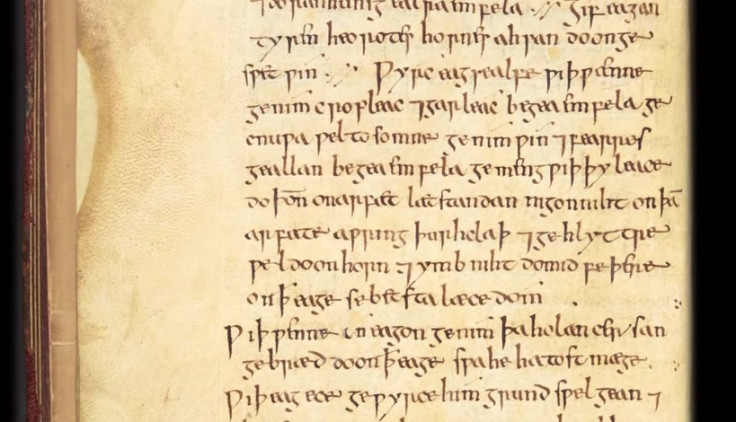Bald's eye salve: 1,000-year-old potion kills superbug MRSA

An ancient Anglo-Saxon eye potion has been found to be extremely effective at killing the superbug MRSA. Scientists at the University of Nottingham have found the 1,000-year-old recipe for Bald's eye salve kills up to 90% of Methicillin-resistant Staphylococcus aureus (MRSA) in mice models.
MRSA is one of the most antibiotic-resistant superbugs known, costing the heath service billions and killing thousands every year.
Anglo-Saxon expert Christina Lee teamed with microbiologists from the university's' Centre for Biomolecular Science to create the ancient potion, the recipe for which was found in an Old English leather-bound volume, to find out if it works as an antibacterial remedy.
Initial results were dubbed "astonishing" with the treatment being extremely effective at killing MRSA. Further research shows it killed most MRSA in "in vivo" wound biopsies.
Bald's eye salve recipe
- Two species of Allium (garlic and onion or leek).
- Wine and oxgall (bile from a cow's stomach).
Instructions
Use a brass vessel to brew the potion, straining it to purify, then leave for nine days before use.
Experts believe the Bald's eye salve is effective because of a combination of ingredients and brewing methods, but further researcher is needed to establish the reason for its success. Lee translated the original recipe, which included an extremely specific method for making the solution. They made four batches as well as a control treatment without the vegetable compounds.
Researchers then made artificial wound infections and exposed the bacterial to the individual ingredients or full recipe. On their own, the ingredients had no effect, but together they killed off the bacteria.
Lee said: "We were genuinely astonished at the results of our experiments in the lab. We believe modern research into disease can benefit from past responses and knowledge, which is largely contained in non-scientific writings. But the potential of these texts to contribute to addressing the challenges cannot be understood without the combined expertise of both the arts and science.

"Medieval leech books and herbaria contain many remedies designed to treat what are clearly bacterial infections (weeping wounds/sores, eye and throat infections, skin conditions such as erysipelas, leprosy and chest infections). Given that these remedies were developed well before the modern understanding of germ theory, this poses two questions: How systematic was the development of these remedies? And how effective were these remedies against the likely causative species of bacteria?
Microbiologist Freya Harrison added: "We thought that Bald's eye salve might show a small amount of antibiotic activity, because each of the ingredients has been shown by other researchers to have some effect on bacteria in the lab ... We were absolutely blown away by just how effective the combination of ingredients was.
"We tested it in difficult conditions too; we let our artificial 'infections' grow into dense, mature populations called 'biofilms', where the individual cells bunch together and make a sticky coating that makes it hard for antibiotics to reach them. But unlike many modern antibiotics, Bald's eye salve has the power to breach these defences.
"There is a pressing need to develop new strategies against pathogens because the cost of developing new antibiotics is high and eventual resistance is likely. This truly cross-disciplinary project explores a new approach to modern health care problems by testing whether medieval remedies contain ingredients which kill bacteria or interfere with their ability to cause infection".
© Copyright IBTimes 2025. All rights reserved.






















